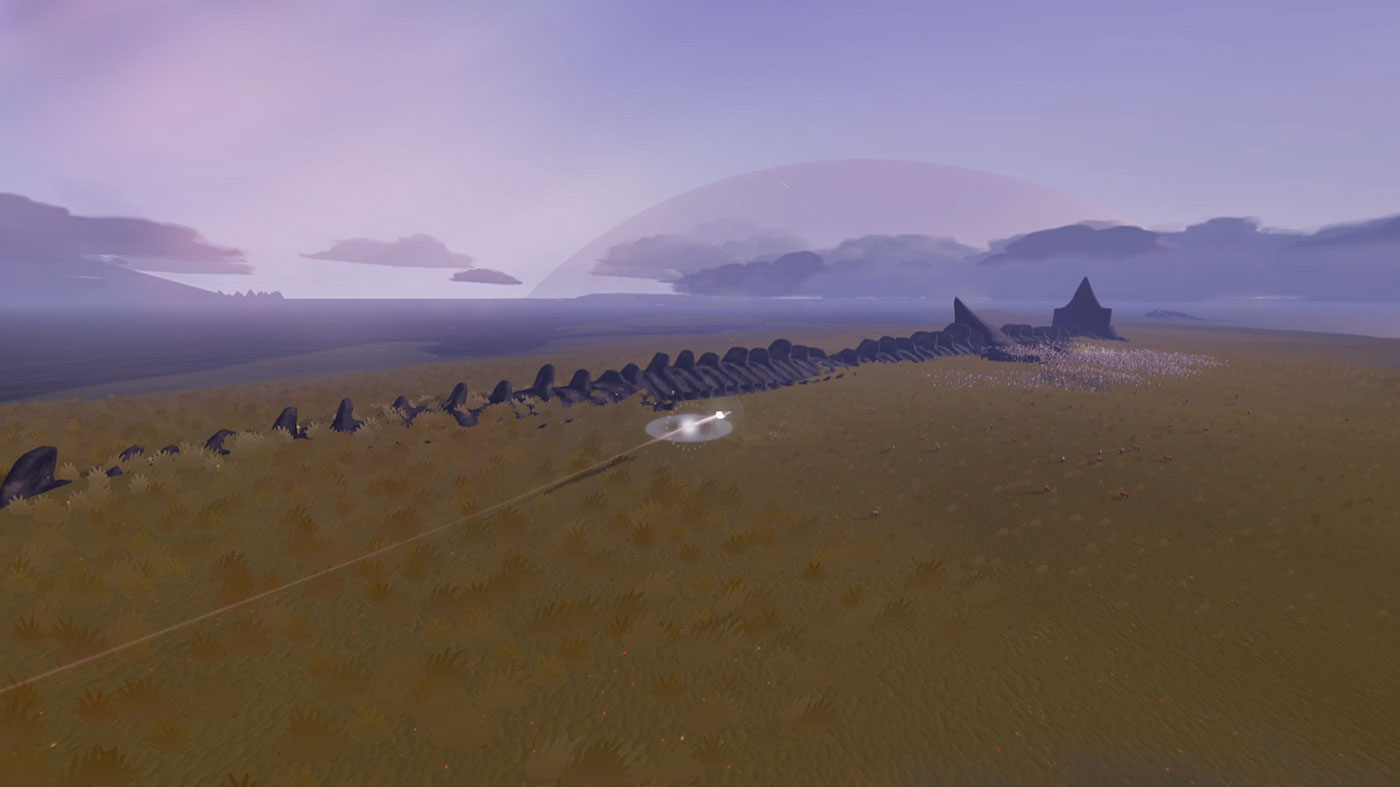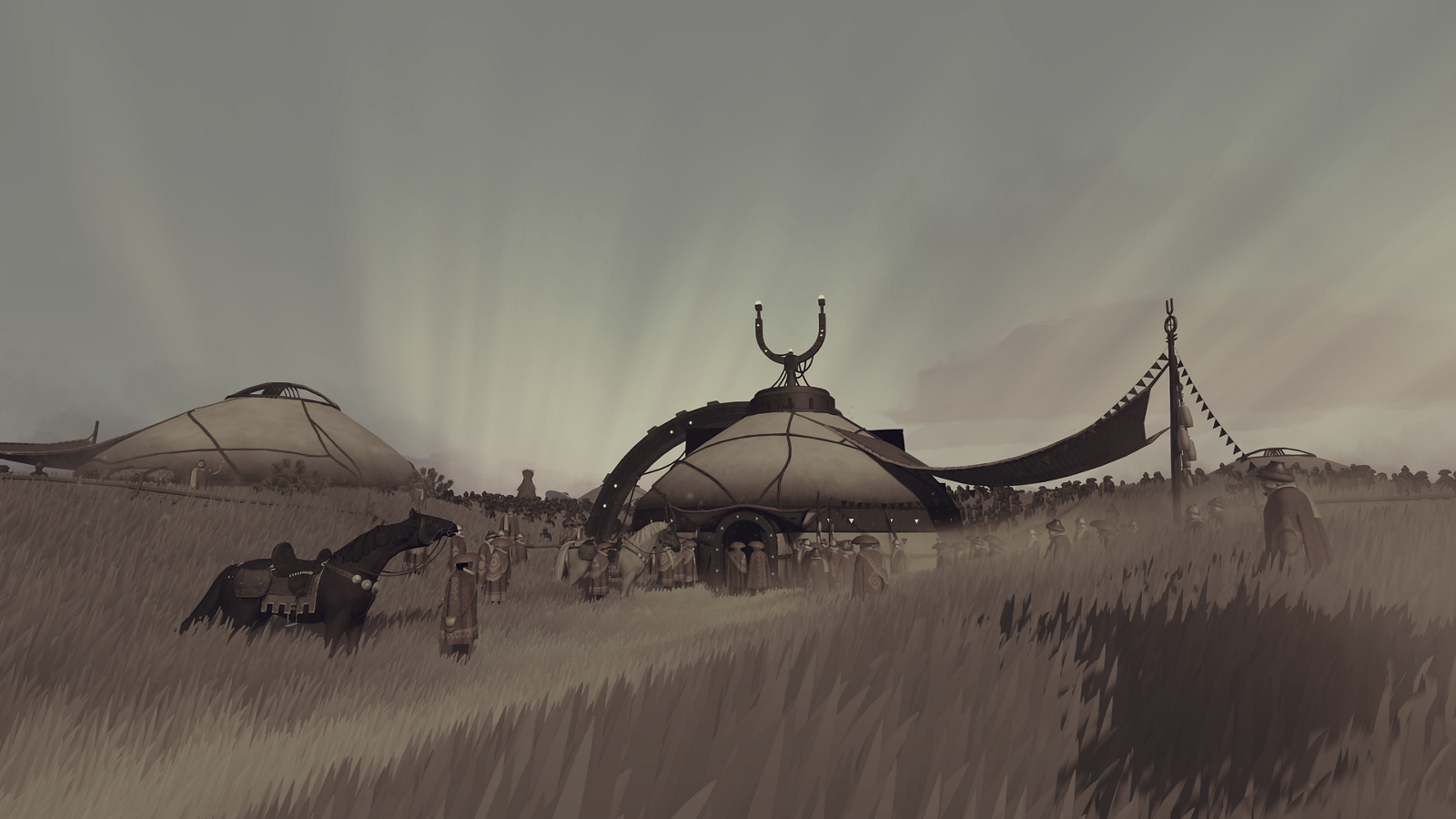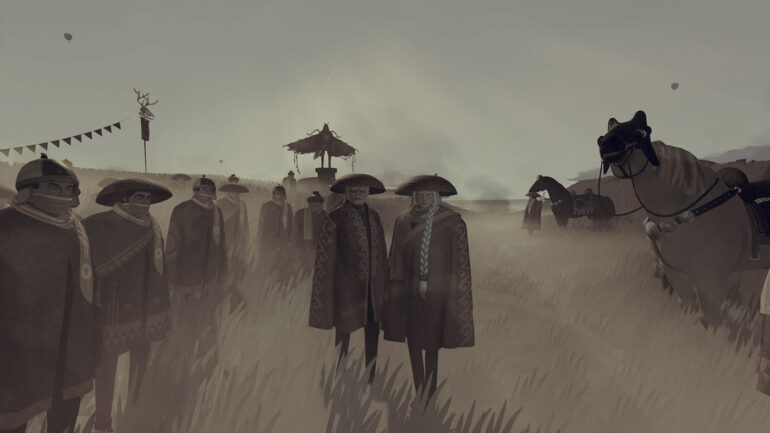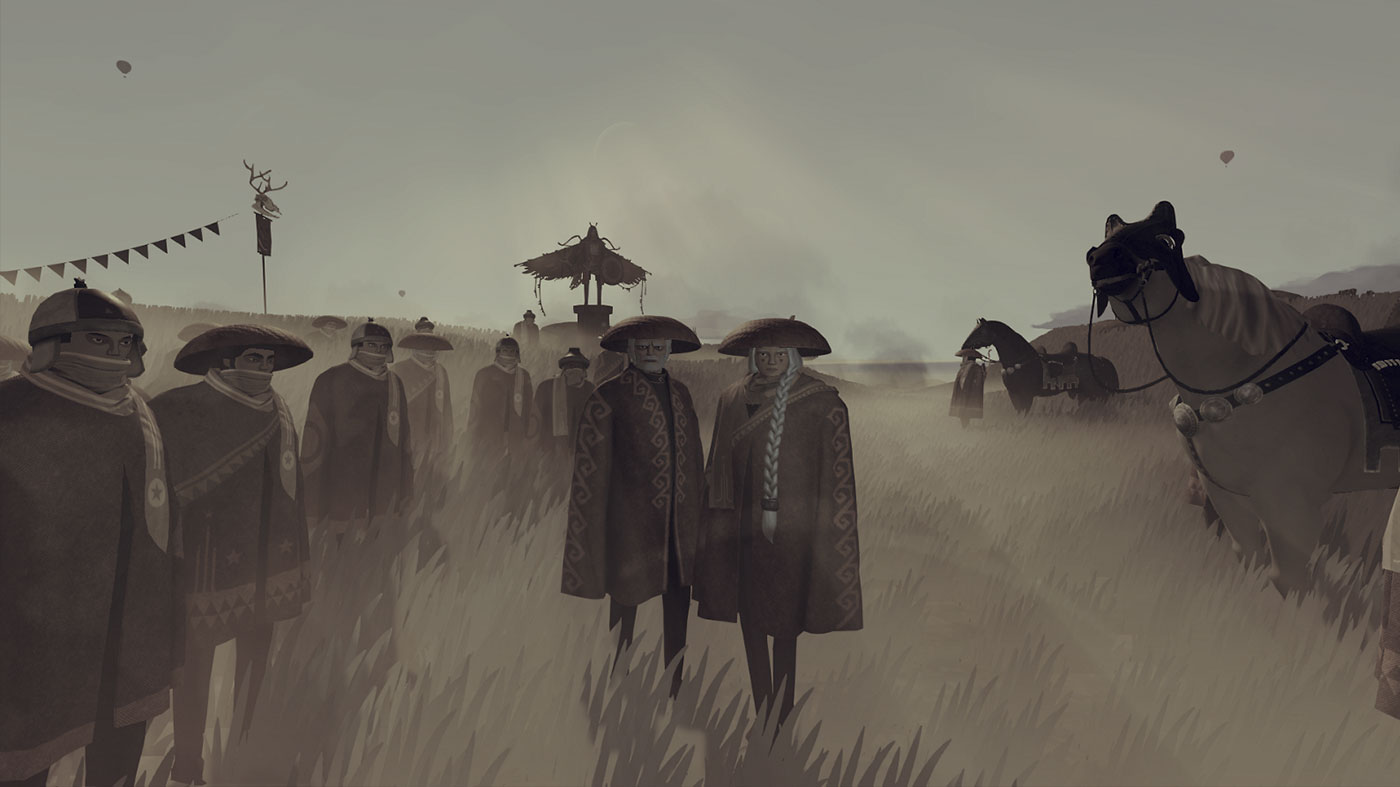Press Start may receive a commission when you buy from links on our site at no extra cost to you.
While it’s certainly been a quiet year for the big PlayStation exclusives we expect from Sony’s myriad studios, it’s made plenty of space for double A and indie games alike to bask in the limelight. JETT: The Far Shore, revealed during the PlayStation 5 showcase stream, is a title that builds its own unique experience by combing the calming and wondrous exploration of games like Journey and The Pathless, with a more typical and focused narrative structure. The end result is a game that has some seriously high highs, but suffers from a fair few issues when brought back down to earth.
JET: The Far Shore follows Mei and a group of scouts tasked with exploring and cataloguing the wildlife and environmental hazards of the Far Shore within the safety of a jett. Their home planet has been brought to its last legs due to pollution and industrialization, which starkly contrasts with the relatively untouched Far Shore. The scouts are also tracing a mysterious signal known as the Hymnwave and are trying to find out why it calls out to them. While the narrative certainly isn’t bad, there’s less focus on the events of the story and more on the characters, and how the Hymnwave affects them. Unfortunately, none of the cast get enough development or screentime to make the emotional moments really hit home. It definitely feels like it’s getting somewhere before the credits roll, but just as its building momentum, it finishes. A lot of the good stuff comes from the environmental storytelling found by scanning wildlife, structures, and other oddities found on the Far Shore, which adds to its sense of mystery and exploration. Most of what’s going on has to be pieced together by the player here, and I think you’ll get out of it what you put in, but I don’t think this is a prime example of less is more.

The most captivating allure of JETT: The Far Shore is its exploration. If I had to compare how JETT plays to something else, I’d say it combines the traversal of The Pathless with the exploration of Pikmin. As a jett pilot, you’ll feel positively dwarfed by some of the sights and creatures you’ll see on The Far Shore. There’s a palpable atmosphere in every environment you explore whether that be tense or calming depends on the circumstances. It’s a world full of unknowns for both the scouts and the player, and each new area feels as mystified as it does potentially dangerous. The game is at its best when you can just jett around and explore the environment at your own volition, though there are a few jaw-dropping set pieces that I won’t spoil here. It’s all brought together by an intoxicating soundtrack that’ll have you in a trance-like state as you blast through environments.
The best part of JETT: The Far Shore has to be its fantastic traversal mechanics. While it’s a bit tricky to get a grasp on at first, once you learn how to properly pilot a jett, you’ll be zipping across the landscape with a thrilling sense of speed and control. The jett by default moves at a slow hover, this mode is great for scanning wildlife, making precise landings, or simply just taking in the sights. Holding triangle for a brief moment will enable the scramjets, you’ll pick up speed and you can expend vapor to move even faster at the cost of scramjet stability. Pressing X will pop the jett into the air, with directional inputs turning it into a dodge roll or a high jump. If it sounds complex, that’s because it is, but once you learn its quirks and how to properly manipulate the landscape to your advantage, JETT provides some of the most rewarding and fulfilling traversal I’ve experienced in a long time. You’ll learn how to extend vapor boosts, use pops to your advantage, dodge roll to avoid obstacles, and more. Piloting the jett almost becomes second nature, and you really get pulled into it when the DualSense’s adaptive triggers kick in while you boost, or the haptic feedback starts rumbling on take off and landing.

Unfortunately, it’s the tasks you have to perform in the jett to progress the main story that cause things to falter a little bit. These objectives quickly fall on the side of repetition, and the ones that require quick and precise movements can often be frustrating and fiddly. Despite the inclusion of new mechanics as you progress, the gameplay rarely evolves alongside the player, puzzles remain simple, and you’ll often find yourself jetting from one area to the next just to do something you’ve already done before. Thankfully, the game has a fairly brisk runtime, so it doesn’t outstay its welcome, but more variety would’ve done wonders for the game. The sections that really stand out are when you’re being chased by hostile wildlife, turning the usually relaxing and rhythmic traversal into a frenetic chase across treetops, down mountains and along cliffsides, though, there aren’t many of these sequences in the game. Other interactions with potentially dangerous creatures have you avoiding them rather than engaging in direct combat, but it’s never too tricky to get out of harms way.
In motion, JETT: The Far Shore looks gorgeous. It has this almost impressionist art style that really suits the kind of environments you’re exploring, they look great as you zip past them, with the camera pulling out, again placing emphasis on how small the scouts are in the grand scheme of things. When it all slows down, though, blemishes start to rear their head, with some simple texture work and models that aren’t particularly detailed standing out like a sore thumb in comparison to the crashing waves and blindingly white glaciers of other environments. Thankfully, most of the game is in motion, so you don’t take notice of it all to often.

What you will have to take note of, is the totally inconsistence frame rate. The game often chugs and gets choppy at certain points for no discernible reason, with some of the bigger set piece moments running fine, while regular exploration at high speeds can really have an impact on performance. I wouldn’t say it’s terrible, but definitely noticeable when they’re often unexpected, and happen often enough that you never truly forget about them.




